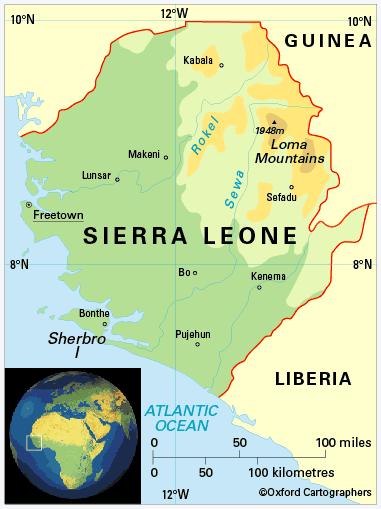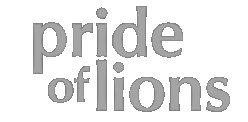Facts of Sierra Leone

- Sierra Leone, a country in West Africa, officially the Republic of Sierra Leone, is approximately the size of South Carolina.
- The country has a population estimated by its Central Statistics Office of 6,294,774.
- Freetown is the nation's capital.
- Sierra Leone emerged from a decade of civil war in 2002, with the help of Nigerian forces (ECOMOG), Britain, the former colonial power, and a large United Nations peacekeeping mission.
- Democracy is slowly being reestablished after the civil war from 1991 to 2002 that resulted in tens of thousands of deaths and the displacement of more than 2 million people (about one-third of the population). The new government's priorities include furthering development, creating jobs, and stamping out endemic corruption.
- Sierra Leone is the lowest ranked country on the Human Development Index and seventh lowest on the Human Poverty Index, suffering from endemic corruption, and lack of press freedom.
- The country is still considered a fragile state and faces the challenges of poverty, corruption and economic mismanagement.
- More than 17,000 foreign troops disarmed tens of thousands of rebels and militia fighters. The country now faces the challenge of reconstruction.
- A lasting feature of the war, in which tens of thousands died, was the atrocities committed by the rebels, whose trademark was to hack off the hands or feet of their victims.
- The precise number of forced or intentional amputations is unknown. Many of the victims (3 out of 4) died at the scene, and after the conflict, there was no systematic effort made by the Sierra Leone government to undertake a registry of victims.
- Estimates made by various international agencies put the number of intentional amputees at 4,000 in SL. Most were displaced during the war, and now live in amputee camps without adequate supplies or medical attention. Others live on the streets.
- A United Nations backed war crimes court has been set up to try those, from both sides, who bear the greatest responsibility for the brutalities and crimes against humanity committed since 1996.
- There are 300,000 child soldiers worldwide. In Sierra Leone there were 6,914 child soldiers.
- Since the end of the conflict, almost 72,500 former combatants have been disarmed and the country has reestablished a functioning democracy.
- The 70,000 former combatants who were disarmed and rehabilitated after the war have swollen the ranks of the many young people seeking employment.
- UNICEF took on a program for ex combatant child soldiers who were screened for positive combat experience. 2 qualifiers were if they knew how to cock and load a weapon and deemed separated children.
- UNICEF learned a lesson that there should have been more follow up of child combatants who were with one of more of their parents of guardians. There is no guarantee that simply because a child is in the custody of its family, he or she will be well taken care of or sent to school. The second lesson for UNICEF was that future peace processes in countries such as SL should include children associated with the fighting forces rather than only child combatants because the latter discriminated in favor of boys, who often carried guns and against girls, who carried bullets and food and were victims of sexual abuse.
- Sierra Leone is rich in diamonds. The trade in illicit gems, known as "blood diamonds" for their role in funding conflicts, perpetuated the civil war. The government has attempted to crack down on cross-border diamond trafficking.
- Sierra Leone has a special significance in the history of the transatlantic slave trade. It was the departure point for thousands of West African captives. The capital, Freetown, was founded as a home for repatriated former slaves in 1787.
- In 1462 Sierra Leone was visited by the Portuguese explorer Pedro da Cintra, who gave it its name Serra de Lećo, meaning "Lion Mountains."
